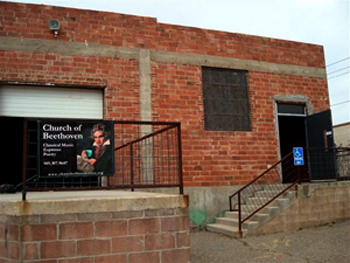Jonathan L. Friedmann, Ph.D.
A rallying cry was heard in nineteenth-century France: “l’art pour l’art”—“art for art’s sake.” Against a backdrop of scholasticism, scientific thinking, and hostility toward “useless” art, French writers argued that the greatest value of art was not some external aim, but self-sufficiency. Art’s highest goal was to exist in its own formal perfection and be contemplated as an end in itself.
This formed the basis of aestheticism, or the aesthetic movement—an approach with ideological ties to Immanuel Kant’s Critique of Aesthetic Judgment (1790), which presents the “pure” aesthetic experience as the “disinterested” contemplation of an object that “pleases for its own sake,” without making reference to reality or claims to utility or morality. More directly, French aestheticism was rooted in Théophile Gautier’s witty defense of his assertion that art is useless (in the preface to Mademoiselle de Maupin, 1835).
Aestheticism was developed by poet Charles Baudelaire, who was greatly influenced by Edgar Allan Poe’s claim, made in “The Poetic Principle” (1850), that the supreme work is a “poem per se.” This governing ideal influenced many other writers, and spread into Victorian England through Walter Pater, Oscar Wilde, Lionel Johnson, and others. Instrumental music, because of its absence of words, was sometimes touted as the apex of this artistic aspiration. Pater famously remarked, “all art constantly aspires towards the condition of music.”
Meanwhile, German romanticists of the nineteenth century promoted self-sufficiency as a musical ideal. In contrast to programmatic music, which has a specific purpose, story, theme, or sung text, so-called “absolute music” was music for its own sake. Poets such as E. T. A. Hoffmann and Ludwig Tieck conceived of instrumental music as the language of a higher realm, and celebrated music’s potential for non-representation and non-conceptualization—qualities that led Kant to dismiss music as “more entertainment than culture” in his Critique of Aesthetic Judgment.
“Absolute music” actually began as a pejorative term, coined by Richard Wagner to expose the limitations of instrumental music and support his own view of opera’s superiority. For Wagner, music without signification was not only ludicrous, but had no right to exist. Proponents of “music per se” held the opposite view: music can (and should) express nothing other than music itself.
In practice, a pure listening experience is unobtainable. Exposure to musical sounds, whether or not they carry explicit meanings, invariably comes with a host of influencing factors, including social conditioning, cultural context, momentary disposition, and mental/emotional associations. Our responses to music, in turn, transcend strictly musical considerations.
That being said, we might choose to hear pieces as (more or less) autonomous works, or read into them extra-musical connotations, either stemming from our own backgrounds or the composers’. However, rarely (if ever) are these avenues of perception clearly bifurcated; we may favor hearing music as absolute or programmatic, but conceptual colorations are impossible to avoid. As Mark Evan Bonds writes in his recent book, Absolute Music: The History of an Idea, “[W]e are most likely to hear [musical pieces] as some combination of the two. But that is a choice we make and not a quality inherent in the works themselves. Neither mode of listening is superior to the other, and the notion that we can hear them in exclusively one way or the other is in any case deeply suspect.”
Visit Jonathan’s website to keep up on his latest endeavors, browse his book and article archives, and listen to sample compositions.



